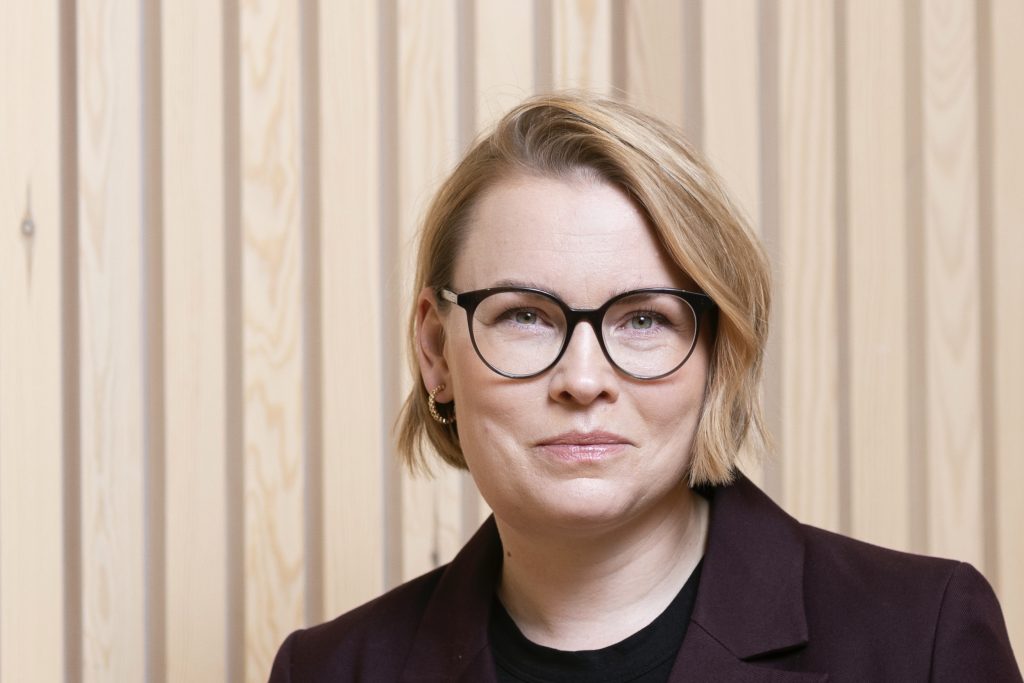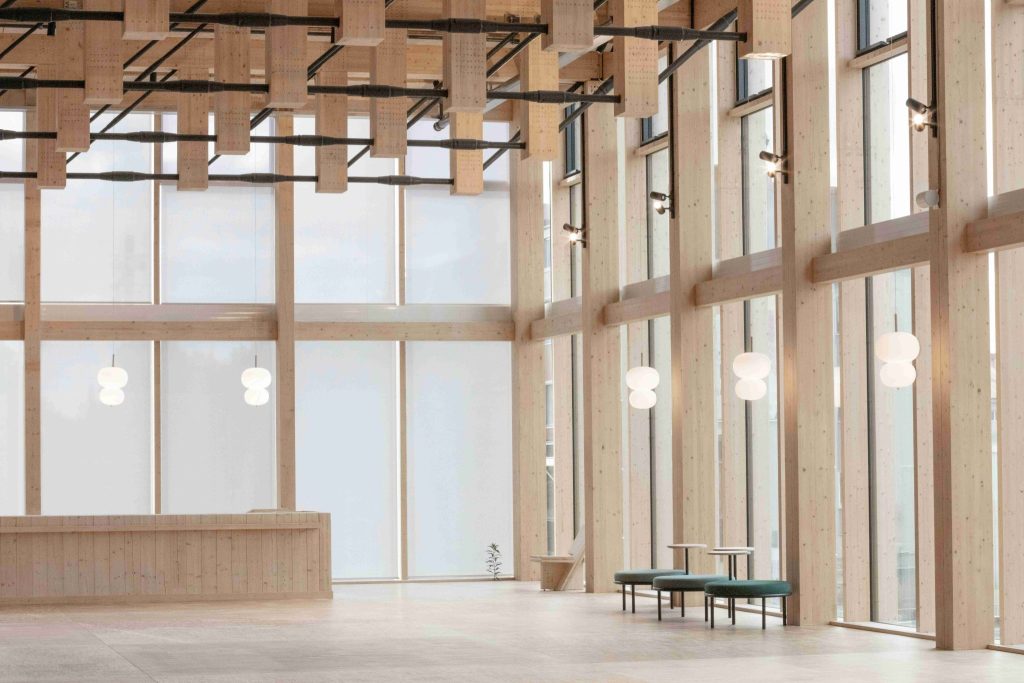Heavy rainfall with resulting floods, collapsed roads and derailed trains. In many municipalities, climate change has already impacted everyday life, bringing human suffering and major financial costs.
Most recently, Västernorrland was hit by the heaviest downpour ever recorded in Sweden. In Kramfors, according to Dagens Nyheter, 123.5 millimetres of rain fell on 6 September alone.
Read this article in Swedish on Arbeidsliv i Norden
More than 40 roads were destroyed, as were several railway lines. Outside Härnösand, a man drove into a pothole caused by the rainfall and died.
More – and worse – cloudbursts are expected, according to the Swedish Meteorological and Hydrological Institute (SMHI). Analyses and preventive measures are needed to tackle a reality that is already here.
At the same time, the climate crisis demands action to reduce CO₂ emissions and global warming. Cooperation between municipalities is one way of gaining ideas, knowledge and direction for their own climate work.
Since 2008, municipalities and regions that want to work towards climate neutrality have been able to participate in Klimatkommunerna (the Climate Municipalities). Their website showcases many ways to improve the climate.
You will find a range of examples from big and small member municipalities. There are climate guides for local politicians on how to proceed and which decisions are needed to speed up the municipality’s climate work.
You can read about how Lund municipality started a local climate policy council with researchers from the Swedish University of Agricultural Sciences and Lund University. It is tasked with reviewing the municipality’s climate work each year and submitting the review to the municipal executive board.
There are stories of sustainable and energy-efficient building projects and of materials from demolition projects being salvaged and reused.
In concrete terms, the site shows how a municipality can work with climate strategies, which in turn are broken down into the many areas that fall under the municipalities’ responsibility.
The list is long. It includes, of course, CO₂ emissions, but also urban planning and construction, transport, energy, procurement, food and meals, to name just a few.
Anyone exploring the many examples will see that neither the ambition nor the efforts in local climate work appear to be diminishing, despite disputes over climate policy at both global and national levels.
“When we talk to local businesses, we see that the local climate work is a matter of life or death – a necessity if you want to remain relevant in our time.
“To stay at the forefront, they must work broadly with sustainability issues, but also with the climate issue.
“That’s why we don’t see any loss of momentum on climate issues on a municipal level,” says Evelina Fahlesson, a municipal councillor from the Social Democratic in Skellefteå and chair of the Klimatkommunerna association.
Clear local gains
A municipality’s environmental work is not always described as a climate issue, but Evelina Fahlesson says efforts to create attractive areas in her own municipality of Skellefteå also have visible results on the climate.
Skellefteå got global attention in 2017, when battery manufacturer Northvolt decided to build their giga factory there. By then, sustainable environment efforts had already started, however.
Based on citizen dialogue, a proposal emerged for how to create an attractive municipality, partly to make young people stay and partly to attract energy-related investment.
Today, most new buildings are made from wood, there are more cycle lanes, improved public transport and many parking spaces have lost their prime spots in the town centre. Instead, there are more green spaces and residents have access to the land all the way down to the Skellefteå River.

“We may not always talk explicitly about the climate issue, but rather about creating attractive living environments. Like the fact that we get cleaner air if we cycle and use public transport, and that more greenery leads to greater biodiversity.
“The local benefits are so clear, and I think that is why it is easier to work on climate issues at the local level,” says Evelina Fahlesson.
Since the last general election, she has been the chair of Klimatkommunerna. The association’s chair is always chosen from one of the parties that is not part of the government.
Klimatkommunerna was an initiative launched by Lund municipality in 2003, which formed the network with eleven other municipalities. The idea was to cooperate on climate issues and to exchange experiences.
The current vision is to “create a future to long for”, and to play a leading role in Sweden’s climate transition through “ambitious, professional work with broad political backing”.
The importance of networking
The aim is to reduce greenhouse gas emissions in Sweden, which is done by exchanging experiences, spreading good examples and engaging in active advocacy.
To become a member, municipalities and regions must have political decisions in place to continuously measure their greenhouse gas emissions, set emission targets, adopt an action plan and implement emission reduction measures.
The association meets twice a year in one of the member municipalities, most recently in Kalmar this month. Digital meetings are held in between, discussing topics like wind power, procurement or other climate-related issues.
“People appreciate the inspiration, the study visits and the chance to learn about different projects and initiatives in the municipalities. We network, exchange experiences and take home knowledge that we can use to push local climate work forward,” says Evelina Fahlesson.
Advocacy and influencing policy are also important parts of the association’s work.
Recently, Evelina Fahlesson and other representatives visited the Swedish Parliament, where they met with the Moderate Party, the Green Party and the Social Democrats to present proposals for a climate agreement between the state and the municipalities.
“The most important thing now is to build the capacity for all municipalities to work on climate issues, and that is why we want a climate agreement between the state and the municipalities.
“We want the state to act as a financial partner in the strategic work on climate issues, while the municipalities can pursue their own local targets and practical measures – in some projects in cooperation with the state,” she says.
All of Sweden should thrive
In her role as chair, a key priority for Evelina Fahlesson is ensuring that small municipalities can benefit from what the larger ones are doing.
When she first became involved in Klimatkommunerna, Skellefteå was not yet as strong an actor in climate and transition work as it is today. She remembers listening, impressed, to the big city municipality of Uppsala and thinking:
“We will never reach Uppsala’s level.”
The situation in Skellefteå is very different now, but she remembers that feeling, and that is why she wants to elevate the smaller municipalities. They may not have a dedicated climate strategist, but they may have someone working on issues that are crucial for the climate.
“The driving forces for a better climate can be found among many different employees, regardless of whether they are called climate strategists or not.
“We are also a long, narrow country with very different conditions. Here in the north, we get loads of snow, while a place like Lund hardly gets any anymore. Conditions differ greatly, and the network meetings must reflect that,” says Evelina Fahlesson.
“We also want to increase the state’s understanding of these different conditions between municipalities and across the country.
If a municipality lacks a climate strategist, it may struggle to analyse how climate change will affect it – for example, risks of landslides, flood forecasts and similar issues. Everyone will be affected by climate change, but not everyone has the capacity to work on it, and that is where the state needs to step in.
“In my view, the whole country should be able to thrive and offer good living conditions, and climate change must not be what determines a place’s ability to grow.”
Proud Skellefteå residents are the best ambassadors
During our conversation, Evelina Fahlesson looks out towards the city park and describes Skellefteå’s transformation.
Several of the municipality’s projects have clearly demonstrated a reduced climate impact thanks to the requirements set in various procurements.
There is a long tradition of building in wood, one example being the 20-storey cultural centre, which stores 9,000 tonnes of carbon dioxide a year. Preschools have solar panels, and there is an airport for drones.
Skellefteå is also the third-largest airport in the world for electric aircraft, and this is where electric-flight pilots are trained.

Next spring, the municipality will host Society Expo 2026, a fourteen-day global event showcasing Skellefteå’s social transformation, inviting residents, researchers, decision-makers and companies to explore sustainable solutions to today’s challenges.
Northvolt, which was meant to represent the energy of the future, was drawn to a city that had long been thinking in terms of both sustainable urban development and sustainable energy. They began building their industrial facilities there, and with them came 4,000 new residents from all over the world.
Global attention turned to Skellefteå, which received countless international visitors. But Northvolt went bankrupt with a great deal of noise and drama.
How do you regain momentum in your climate work after that?
“The people of Skellefteå haven’t sunk into despair because of the bankruptcy. If anything, I would say they have become even better ambassadors for the municipality and for future investments.
“Many have been proud of the people who came from all over the world, and those visitors didn’t only look at the industrial establishment, but the whole community.
“We also notice among companies that our focus on sustainability is becoming increasingly important, from the choice of location to the very end of the production chain,” she says.
“The green transition started here, but it needs to happen everywhere,” says Evelina Fahlesson.





